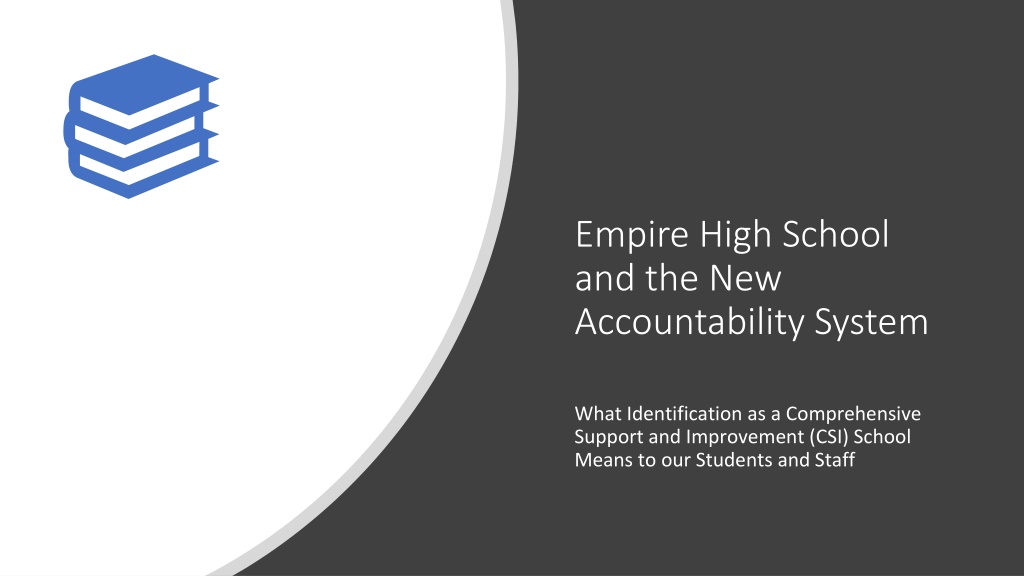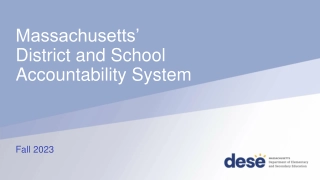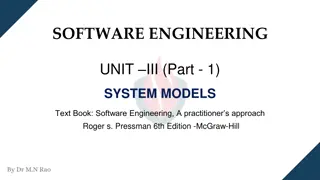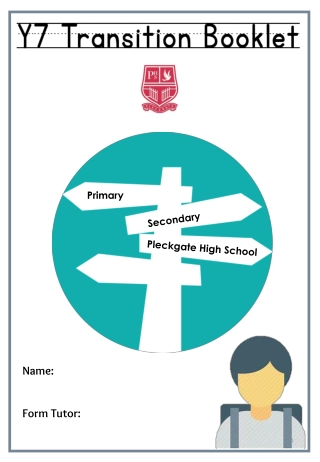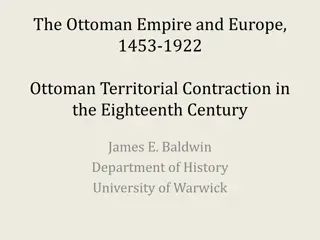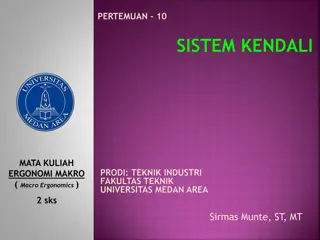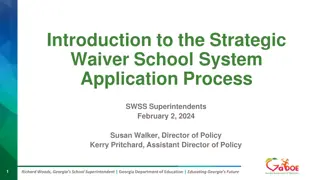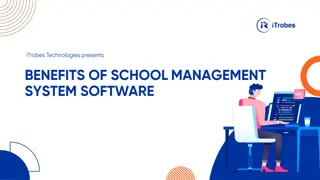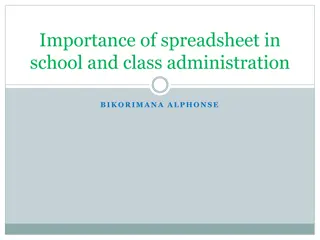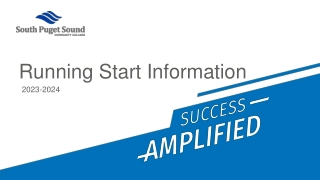Understanding Empire High School's New Accountability System
Explore Empire High School's journey with the Comprehensive Support and Improvement (CSI) School identification under the new accountability system. Delve into reasons for the system, New York's indicators for school performance, the Every Student Succeeds Act (ESSA) impact, educational equity, and NYSED's new performance indicators for schools.
Understanding Empire High School's New Accountability System
PowerPoint presentation about 'Understanding Empire High School's New Accountability System'. This presentation describes the topic on Explore Empire High School's journey with the Comprehensive Support and Improvement (CSI) School identification under the new accountability system. Delve into reasons for the system, New York's indicators for school performance, the Every Student Succeeds Act (ESSA) impact, educational equity, and NYSED's new performance indicators for schools.. Download this presentation absolutely free.
Presentation Transcript
Empire High School and the New Accountability System What Identification as a Comprehensive Support and Improvement (CSI) School Means to our Students and Staff
Discuss Discuss reasons for a new accountability system Review New York s new accountability system Review Including the new indicators of school performance Today s Presentation Present Present how our school performed on each of the indicators Discuss Comprehensive Support and Improvement School Discuss How we will build on our current school-improvement efforts 2
The Every Student Succeeds Act or ESSA is the federal law for K-12 education in the United States. States receive funding from the United States Department of Education to help districts and schools improve student outcomes, particularly for groups of students who have historically underperformed compared to state averages. NY receives about $1.6 billion annually in ESSA funding. Why a New Accountability System? At Empire High School, ESSA funding supports programs and services that include: academic support for students who are struggling; before and after-school tutoring; counseling; mentoring; supplemental supplies for homeless students; and parent and family engagement workshops. In exchange for funding, states must have an accountability system for measuring school performance and determining which schools need extra support. o States have flexibility in developing these accountability systems States can incorporate measures of school success that go beyond test scores 3
Accountability Educational Equity Educational equity means that all students succeed and thrive in school no matter who they are, where they live, or where they go to school. Accountability is everyone s responsibility: we should celebrate what we do well and recognize what we need to improve, and identify the implications of the choices we make. Being identified as a Comprehensive Support & Improvement School means we will get extra help to assist us in our improvement efforts. 4
The New York State Education Department (NYSED) has established a new set of indicators to measure school performance. New York s New New York s New Accountability Accountability System System More than a thousand people parents, educators as well as national experts offered input. Broader than in the past - Much stronger focus on student growth and progress - More comprehensive look at school performance 5
Multiple Measures of Performance NYSED is using several indicators to determine the performance of high schools: o Student academic achievement in language arts, math, science, and social studies o Academic progress in language arts and math o English language proficiency o Chronic absenteeism o Graduation rates o College, career and civic readiness For every school, these measures are applied to all studentsand specific student subgroups, such as members of racial and ethnic groups, students with disabilities, and English language learners 6
How Schools Are Measured On Each Indicator For every indicator, a school is given a numeric score: 1 is lowest For every indicator: A score of 1 to 4 is given for all students at a school and 4 is highest A score of 1 to 4 is given for each specific student subgroup at a school for which the school is accountable 7
The Individual Indicators What Each Indicator Measures and How our School Performed 8
Levels are assigned based on where a school ranks compared to all other schools in the state: Rank Level 10% or Less 1 10.1 to 50% 2 Measuring Student Academic Achievement (Composite Performance Index) 50.1 to 75% 3 Greater than 75% 4 This indicator measures achievement on state assessments in English language arts (ELA), math, science, and social studies. Levels are assigned based on where a school ranks compared to all other schools in the state. Schools receive credit based on a student s best results on high school assessments within 4 years of a student entering grade 9. This year we were held accountable for students who entered grade 9 in the 2014-15 school year. Schools receive no credit for students who score at accountability Level 1, partial credit for students who score at accountability Level 2, full credit for students who score at accountability Level 3, and extra credit for students who score at accountability Level 4. The next slide shows how scores from 0 100 on Regents exams are converted to Levels. A school can receive an index that ranges from 0 to 250. Empire High School had a Performance Index of 101 out of a possible 250. Empire High School received a Level 1 on this indicator, meaning our school performed among the lowest 10 percent among all high schools in the state. 9
High School Performance Level Assessments 10
This indicator measures the rate of graduation for the individual cohort of students who first entered grade 9 4, 5, and 6 years ago, compared to our school s measures of interim progress (MIP) and long-term goals. For the 4 year cohort, Empire High School had a school MIP of 78, the State MIP is 82.3, and the State long-term goal is 84.4. Our performance was 79, resulting in Level 2. Measuring Graduation Rates For the 5 year cohort Empire High School had a school MIP of 80, the State MIP is 84.5, and the State long-term goal is 86.3. Our performance was 80, resulting in Level 2. For the 5 year cohort Empire High School had a school MIP of 81, the State MIP is 84.6, and the State long-term goal is 86.7. Our performance was 80, resulting in Level 1. Because Empire High School received Levels 2, 2, and 1 its overall Level for Graduation Rate was 2, as this indicator uses regular rounding rules.
This measure combines the Student Achievement and Graduation Rate indicators. Measuring Student Test Achievement (Composite Performance) & Graduation Creates a Combined Composite Performance and Graduation Rate measure by: o Adding the Composite Performance Level and the Graduation Rate Level, giving a number from 2-8. For Empire High School that would be a Composite Performance Level of 1 and a Graduation Rate Level of 2, equaling 3. o Ranking schools with the same number (for Empire High School a 3) based on their rank for Composite Performance and for Graduation Rate. o Assigning a percentile rank to the result. On this indicator, our school received a Level of 1 for all students, placing the school among the lowest ten percent in the state. Rates Combined
This indicator measures overall student progress on state assessments in English language arts and math, compared to our school s measures of interim progress (MIP), the State MIP and long-term goals o In ELA, Empire High School had a school MIP of 80.3, the State MIP was 100.7, and the State long-term goal was 117. Empire High School s performance was 72.6. Since we did not meet either MIP, we received Level 1 in ELA. o In math, Empire High School had a school MIP of 79, the State MIP was 103.3 and the State long-term goal was 119.4. Since we met our school MIP, we received Level 2 in math. Measuring Academic Progress However, because Empire High School did not receive a Level 2 for both ELA and math our overall Level for Academic Progress was Level 1.
This indicator measures progress of English language learners (ELL) in meeting their individual targets on the New York State English as a Second Language Achievement Test (NYSESLAT). Each school receives a Success Ratio on this measure based on the percent of students who made progress compared to the probability that a student will make progress. A success ratio of 1.0 means students did exactly as expected in terms of making progress towards English proficiency; greater than 1.0 better than expected; and less than 1.0 less than expected. On this indicator, Empire High School had a success ratio of .62 and received a Level 2. Measuring English Language Proficiency
This indicator measures the percentage of students who miss 10% or more of the days they are supposed to attend, compared to our school s measures of interim progress (MIP) and long-term goals. Empire High School had a school MIP of 34.4%, the State MIP was 15%, and the State long- term goal is 13.3%. Empire High School s performance was 26.2%, meaning 26.2% of students at Empire High School were absent for 10% or more days of instruction. Since we met the school MIP, but not the State MIP or long-term goal, Empire High School received a Level 2. Measuring Chronic Absenteeism
This indicator measures the percentage of students who achieve various type of diplomas and credentials and the degree to which students enroll and succeed in advanced courses or career and technical education programs. Measuring College, Career, and We earn from 0 to 2 points for each student depending on what credential they receive and the success of students in advanced coursework. For example, we receive the maximum 2 points for students who graduate in 4 years, with a Regents Diploma with Advanced Designation or Regents Diploma and the passing of an AP course with a score of at least 3. Civic Schools receive a score of between 0 and 200. Readiness Empire High Schools had a school MIP of 125, the State MIP is 128.2, and the State long-term goal is 136. Empire High School had a CCCR Index of 120. Since we did not meet either MIP, we received a Level 1 on this indicator.
Identification for Comprehensive Support and Improvement A high school can be identified for Comprehensive Support and Improvement if its Levels of Performance meets one of these five scenarios Composite Performance Grad Rate Combined Composite Performance & Grad Rate Chronic Absenteeism Scenario ELP Progress CCCR 1 Both Level 1 Level 1 Any Level Any Level 2 Either Level 1 Level 1 None Any One of the Three is Level 1 3 Either Level 1 Level 1 Level 1 Any Level 4 Either Level 1 Level 1 Level 2 Any One of the Three is Level 1 5 Either Level 1 Level 1 Level 3 or 4 Any Two Level 1 Empire High School s Performance was: Composite Performance Grad Rate Combined Composite Performance & Grad Rate Chronic Absenteeism ELP Progress CCCR 1 2 1 2 1 2 1 Empire High School has been identified for Comprehensive Support and Improvement because we met Scenario 4. 17
Comprehensive Support & Improvement What it Means to Our School 18
Required CSI School Interventions Empire High School will: Participate in an on-site needs assessment conducted by the New York State Education Department. Review additional data to identify needs to be addressed in the school s annual improvement plan. Conduct annual surveys of parents, staff, and students. Develop, in consultation with parents, school staff, and students, an annual School Comprehensive Education Plan (SCEP) and submit to NYSED for approval. Identify a school-wide evidence-based intervention to be included within the annual improvement plan. Take steps to increase parent and student participation in decision-making. Receive Federal School Improvement funds to support our efforts. CSI School 19
How Schools Can Exit CSI Status To exit CSI status, the school must for two consecutive years be above the levels that would cause it to be identified for CSI status: o Empire High School can exit CSI status if for the 2018-19 and 2019-20 school years: Composite Performance Level and Graduation Rate are both Level 2 or higher, or Both the Composite Performance Index and Graduation Rate are higher than at the time of identification; AND Combined Composite Performance and Graduation Rate is Level 2 or higher; AND none of the following is Level 1: Graduation Rate; English Language Proficiency; Chronic Absenteeism o Empire High School can also exit CSI status if the school is not on the next list of CSI schools created based on 2020-21 school year results. 20
As a result of the Empire High School becoming a Comprehensive Support and Improvement School, we will take the following next steps: Next Steps
Questions? 22
[INSERT CONTACT INFORMATION FOR APPROPRIATE SCHOOL PERSONNEL]
